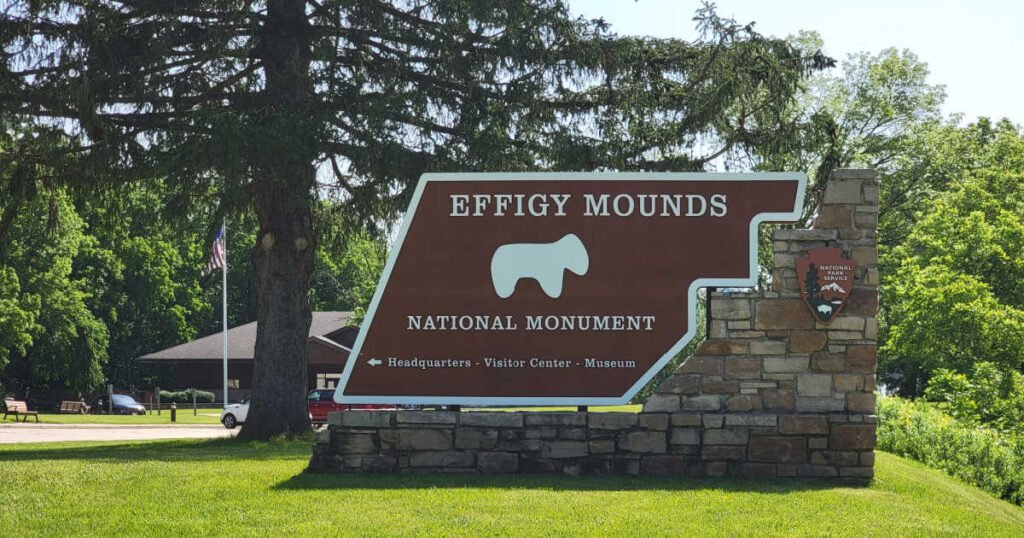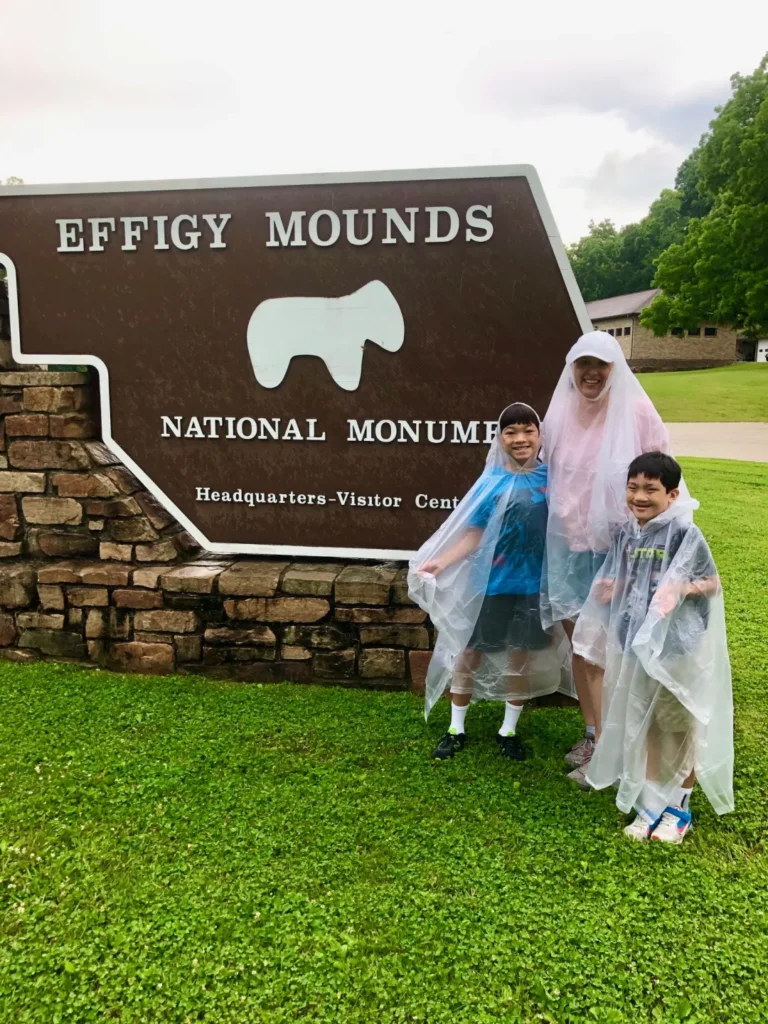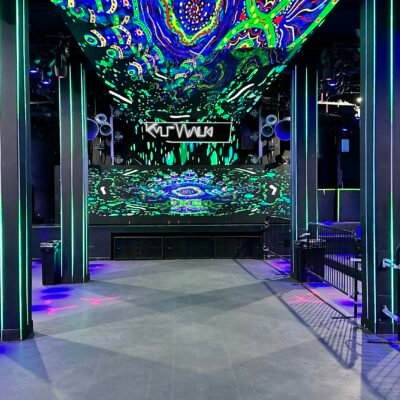Located in the northeast corner of Iowa, Effigy Mounds National Monument is a breathtaking and sacred site. This unique monument features more than 200 prehistoric mounds created by Native American cultures. Some of these mounds are shaped like animals, especially bears and birds. These “effigy” mounds are not just earthen shapes—they are powerful symbols of spiritual beliefs, community life, and ancient traditions.
If you’re looking for a place where natural beauty meets deep historical roots, Effigy Mounds National Monument is a must-visit. This article explores the history, significance, and beauty of the monument, helping you understand why it’s one of America’s most meaningful and mysterious national treasures.
What Is Effigy Mounds National Monument?
Effigy Mounds National Monument is a protected area covering over 2,500 acres in northeastern Iowa, near the town of Harpers Ferry. It sits alongside the Mississippi River and is home to over 200 Native American burial and ceremonial mounds, some dating back more than 1,000 years.
The mounds were created by various prehistoric cultures, mainly the Woodland Culture, which lived between 1000 BCE and 1000 CE. Some of these mounds are simple round or conical shapes, but what makes this site special is the effigy mounds—earthen structures shaped like animals.
Why Are the Effigy Mounds Important?
These mounds are believed to serve spiritual and ceremonial purposes, often linked to burial practices and ancestral worship. Some mounds contain human remains, while others do not, suggesting they were used for symbolic reasons.
The shapes of the mounds—especially bears and birds—are thought to represent spiritual beings or clan symbols. Bears are often linked with the earth and strength, while birds may symbolize the sky and spiritual journeys. The fact that these massive mounds were built without modern tools is a testament to the cultural and spiritual dedication of the mound builders.
A Sacred Site for Native American Tribes
Effigy Mounds National Monument is more than just a historical site—it is sacred ground for many Native American tribes. The monument is closely associated with the Ho-Chunk, Iowa, Otoe, Omaha, and Dakota tribes, among others. These tribes view the mounds as burial sites of ancestors and spiritual landmarks.
Today, tribal members continue to visit the monument to honor their heritage and traditions. The National Park Service works closely with Native American communities to protect and preserve the site in a respectful and culturally appropriate way.
Discovering the Monument: What to See and Do

If you’re planning a trip to Effigy Mounds National Monument, here’s what you can explore:
Visitor Center
Start your journey at the Effigy Mounds Visitor Center, where you’ll find:
- Educational exhibits about mound-building cultures
- 3D models of mound structures
- Historical artifacts
- A short video introduction to the park’s significance
Hiking Trails and Scenic Views
Effigy Mounds offers 14 miles of hiking trails through forests and along the bluffs of the Mississippi River. Popular routes include:
- Fire Point Trail: A 2.2-mile round-trip that offers panoramic views of the river
- Hanging Rock Trail: A scenic trail with access to multiple mounds and scenic overlooks
- North and South Unit Trails: Trails that take you deeper into the monument, where more remote effigy mounds can be found
The Mounds Themselves
Keep your eyes open for the Bear Mound, Bird Mound, and Marching Bear Group—one of the most famous and impressive effigy mound formations in the park.
Mississippi River Views
The monument’s location offers stunning views of the Upper Mississippi River Valley, with lush forests, cliffs, and wildlife along the way.
Historical Background of the Mound Builders
The mounds at Effigy Mounds National Monument were constructed by the Woodland Culture, a prehistoric Native American group that thrived in the area from around 500 BCE to 1200 CE.
They lived in small communities, practiced agriculture, and had a rich ceremonial life. The act of mound-building required teamwork, planning, and spiritual belief, suggesting these people had complex societies with leaders, shamans, and craftsmen.
Later cultures, including the Mississippian people, would continue similar mound-building traditions in other parts of the U.S., but the effigy shapes are unique to parts of the Upper Midwest.
Why the Shapes Matter: Animal Effigies
Unlike regular burial mounds, effigy mounds are built in the shapes of animals. Some scholars believe the mounds were used to mark territory, tell stories, or serve as religious symbols.
Common shapes include:
- Bear: Represents earth, strength, and protection
- Bird: Symbolizes sky, spirit, and freedom
- Panther or Lizard: Rare shapes that may be linked to water and the underworld
Many mounds are aligned with celestial events, such as solstices or lunar cycles, which shows the builders had knowledge of astronomy.
Preservation and Protection
The monument was officially established in 1949 to preserve these culturally important structures. Today, the National Park Service (NPS) manages the site and enforces strict rules to protect the mounds from erosion, vandalism, or unauthorized digging.
Visitors are expected to stay on trails, avoid climbing the mounds, and treat the area with respect. Drones, metal detectors, and other intrusive tools are strictly prohibited.
Educational and Cultural Programs
Effigy Mounds offers interpretive programs for school groups, tourists, and researchers. Throughout the year, the park hosts:
- Guided hikes with park rangers
- Cultural demonstrations by Native American tribes
- Archaeology talks
- Junior Ranger programs for kids
These programs aim to educate the public about the history, science, and living culture tied to the mounds.
Visiting Tips and Best Times to Go

Planning a trip to Effigy Mounds National Monument? Here are some helpful tips:
- Best Time to Visit: Spring and fall offer mild weather and beautiful foliage. Summer can be warm but still manageable with the shaded trails.
- Entrance Fee: Free admission
- Hours: The visitor center is usually open daily, but check the official site for seasonal hours.
- Facilities: Restrooms, water fountains, picnic areas, and gift shop available at the visitor center
Don’t forget to bring:
- Comfortable hiking shoes
- Water and snacks
- A camera (but no drones)
- Binoculars for birdwatching
Effigy Mounds and the Future
Preserving the Effigy Mounds is not just about protecting ancient earthworks—it’s about honoring the people who built them and maintaining a connection to America’s Native history.
In recent years, the monument has gained more attention for its cultural and environmental significance. It also stands as a symbol of reconciliation, reminding visitors that the land has a story far older than modern borders or buildings.
With the help of archaeologists, tribal historians, and park rangers, Effigy Mounds National Monument continues to educate, inspire, and connect us to a past that still matters today.
Final Thoughts
Effigy Mounds National Monument is a place like no other. It’s quiet yet powerful, ancient yet still full of life. Whether you visit for a scenic hike, a history lesson, or a spiritual journey, you will leave with a deeper appreciation for the people who walked this land long before us.
Do Follow USA Glory On Instagram
Read Next – Explore Chaco Culture National Historical Park Wonders






